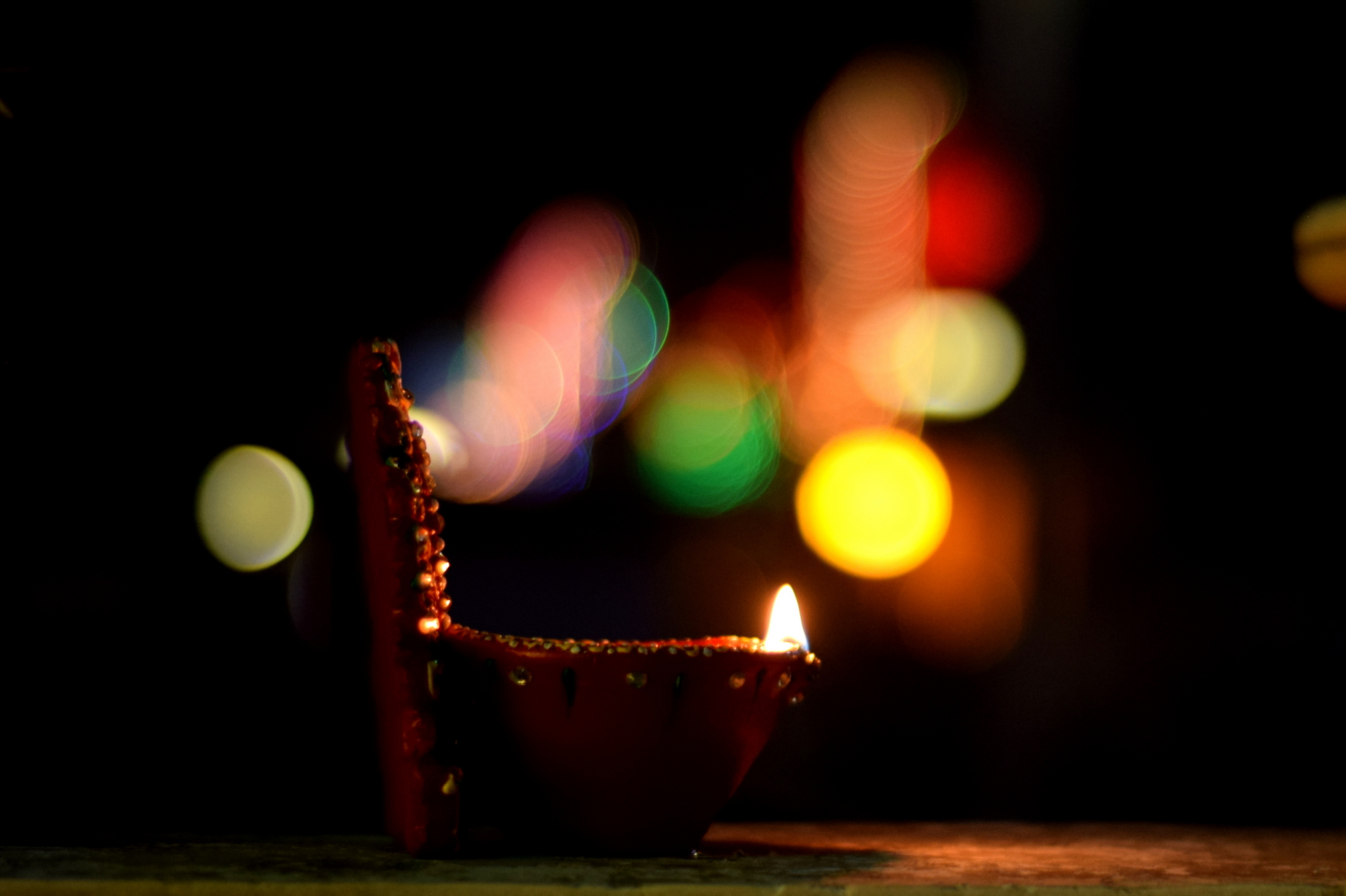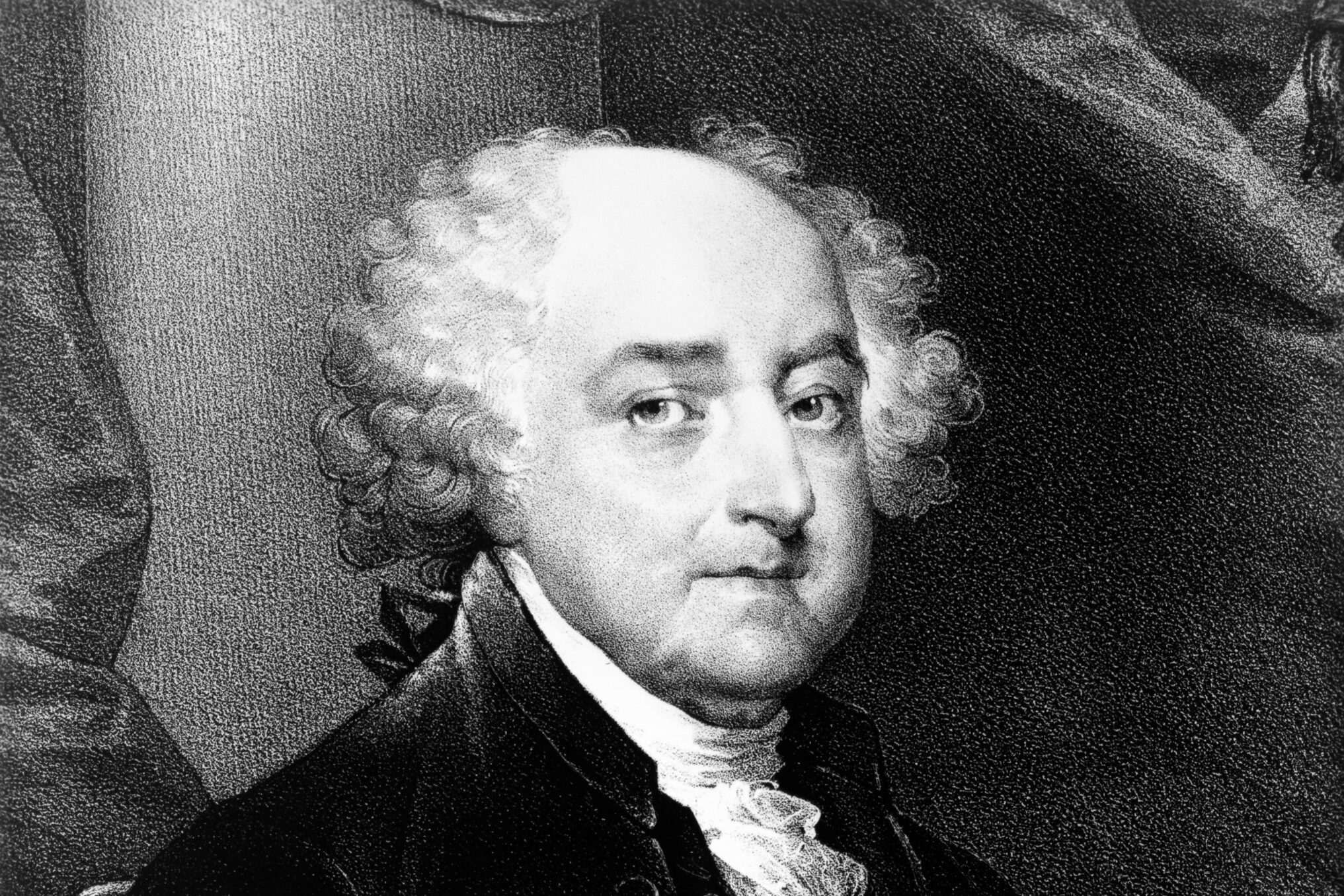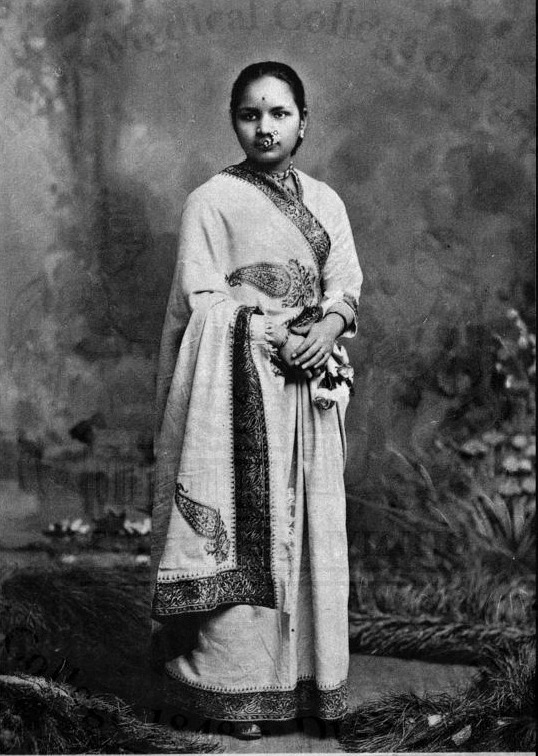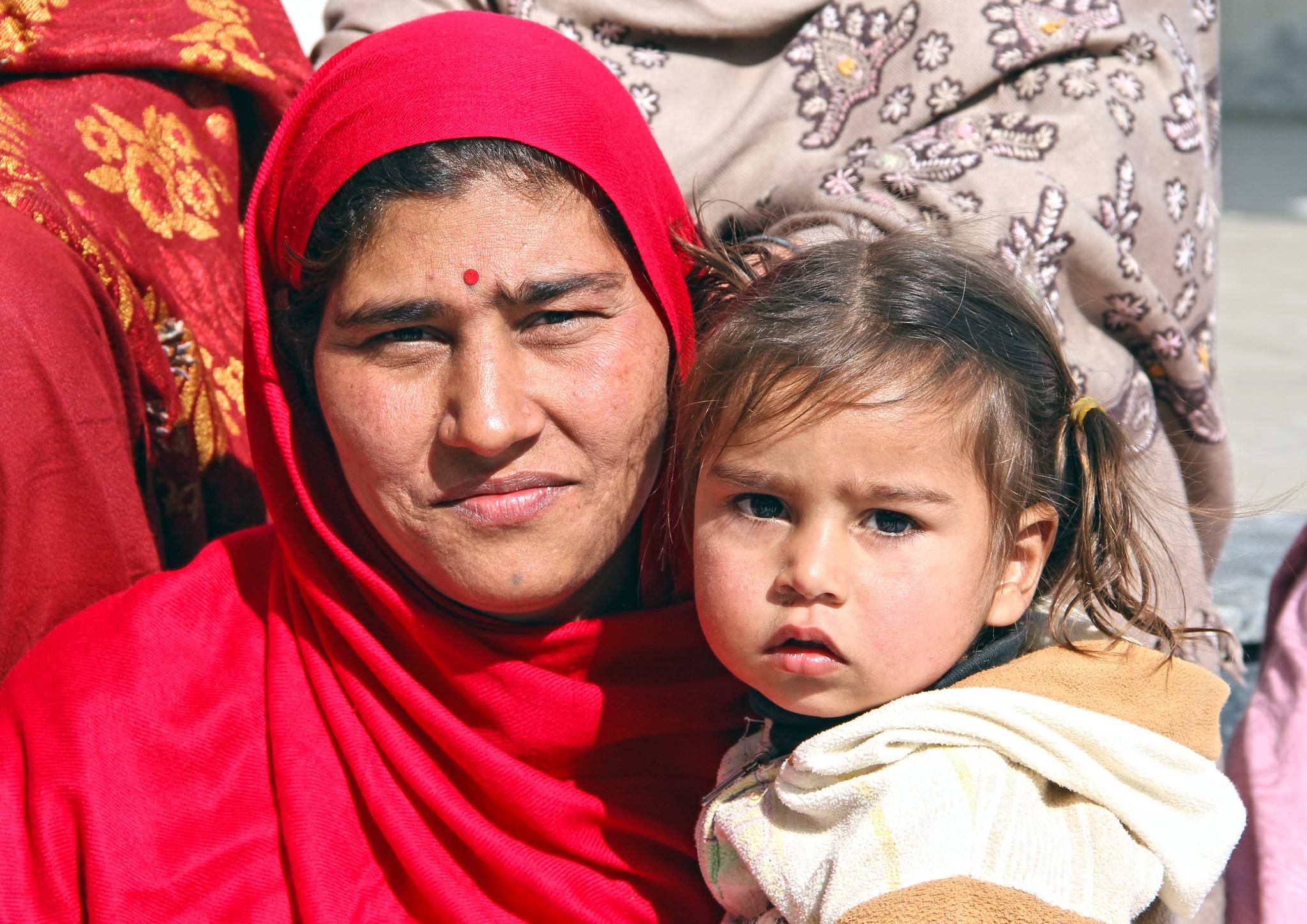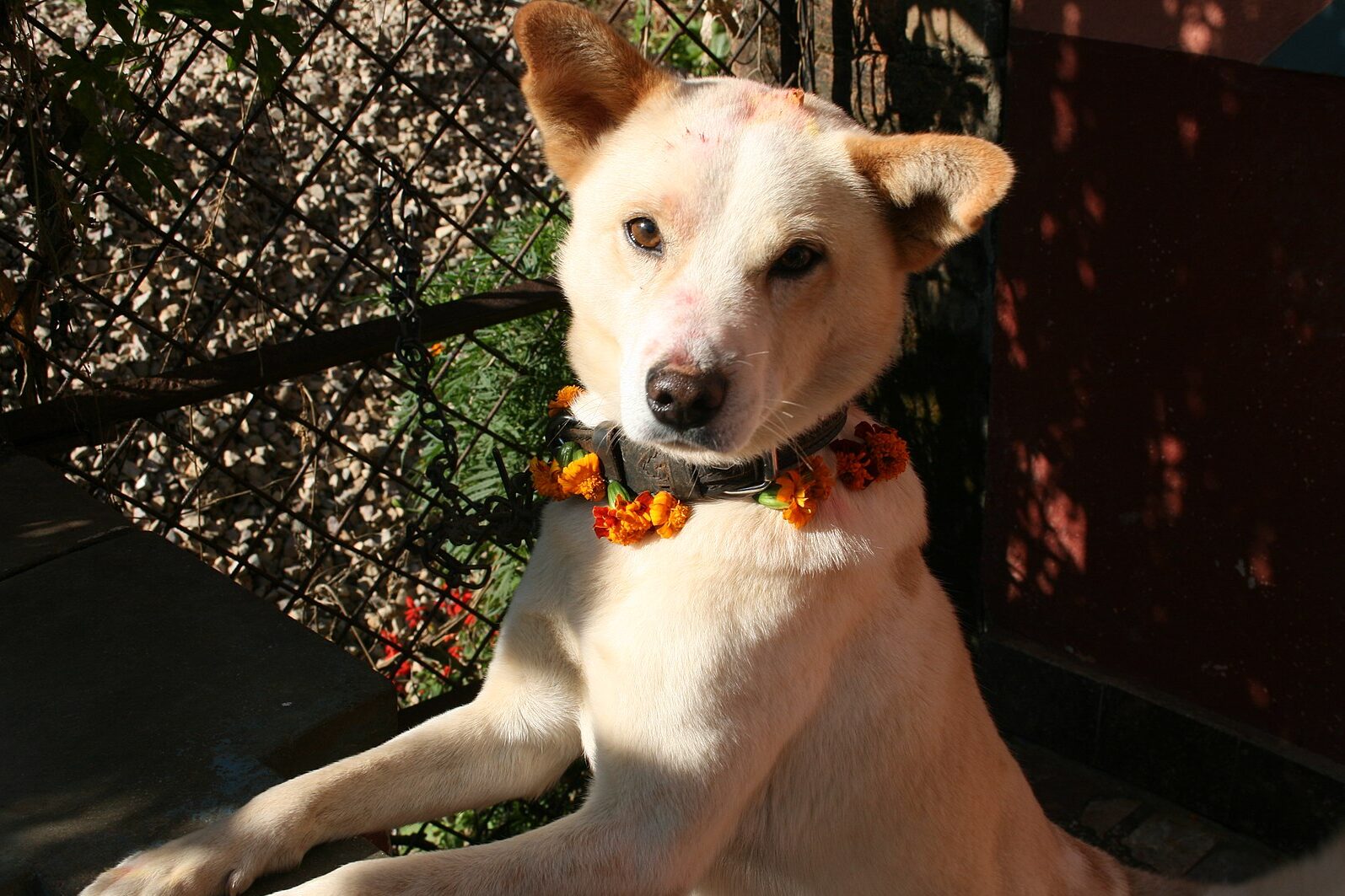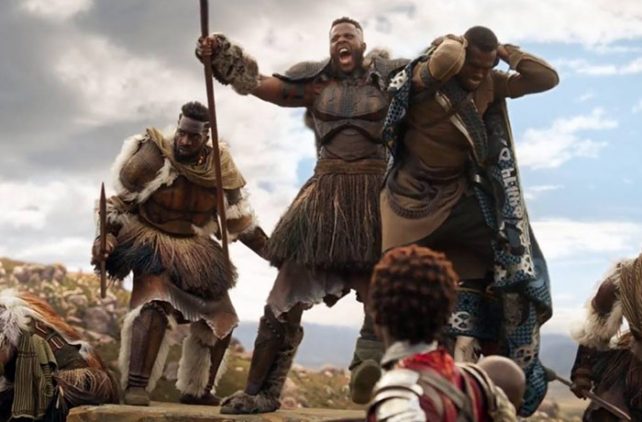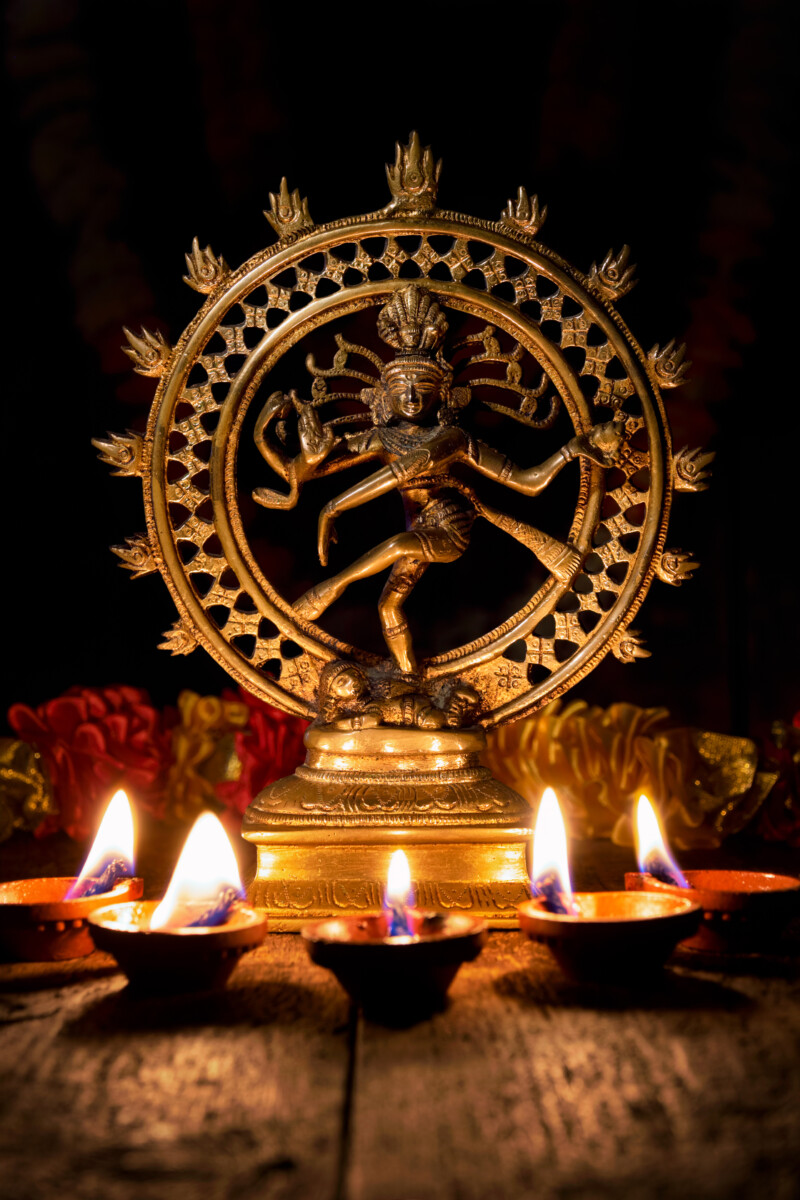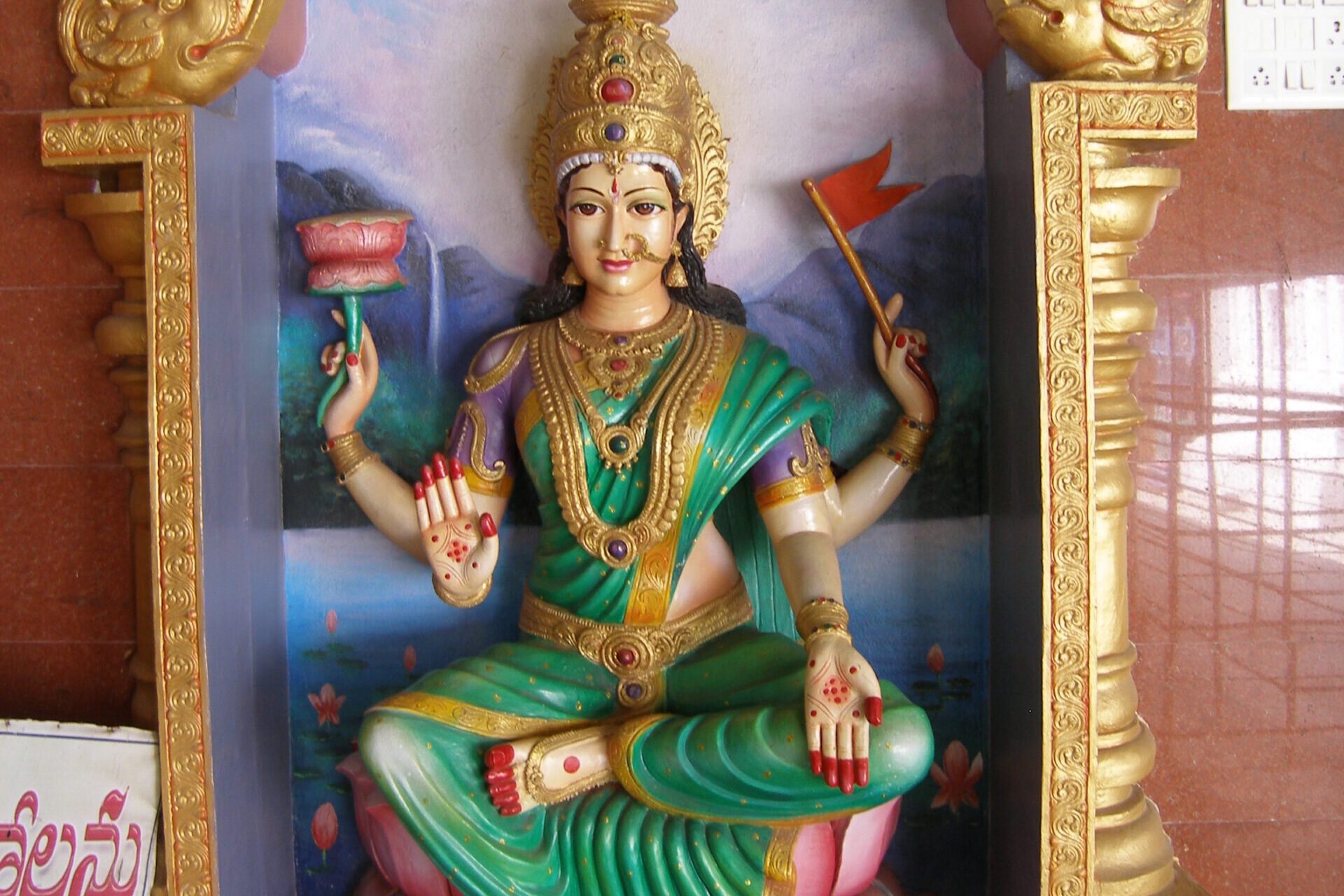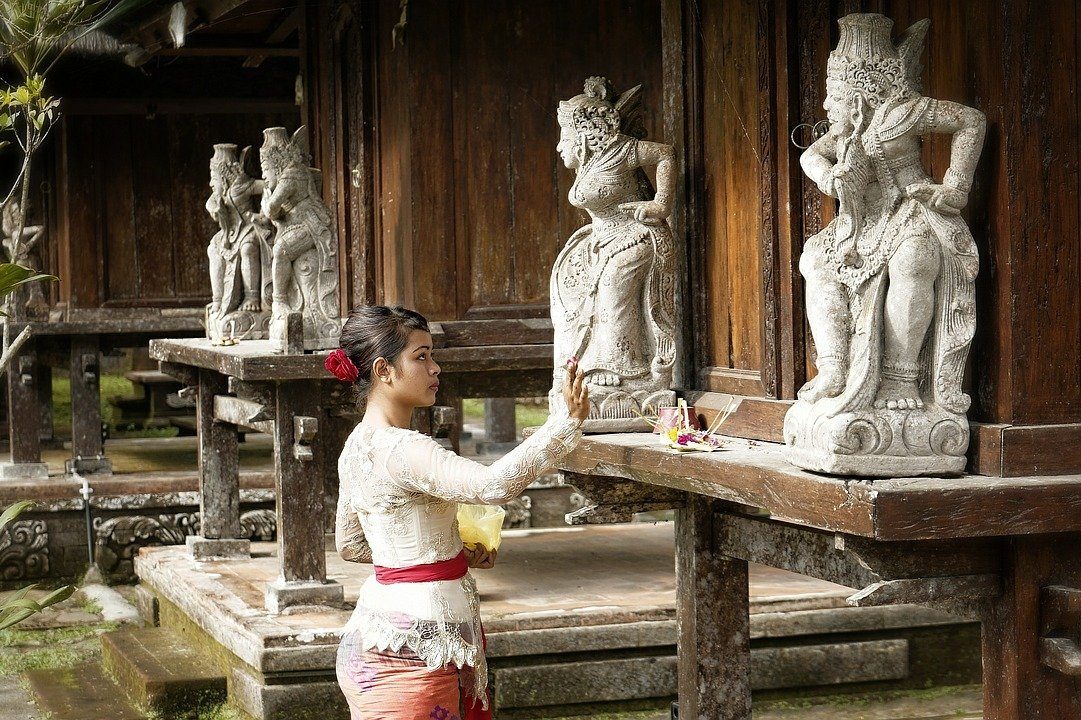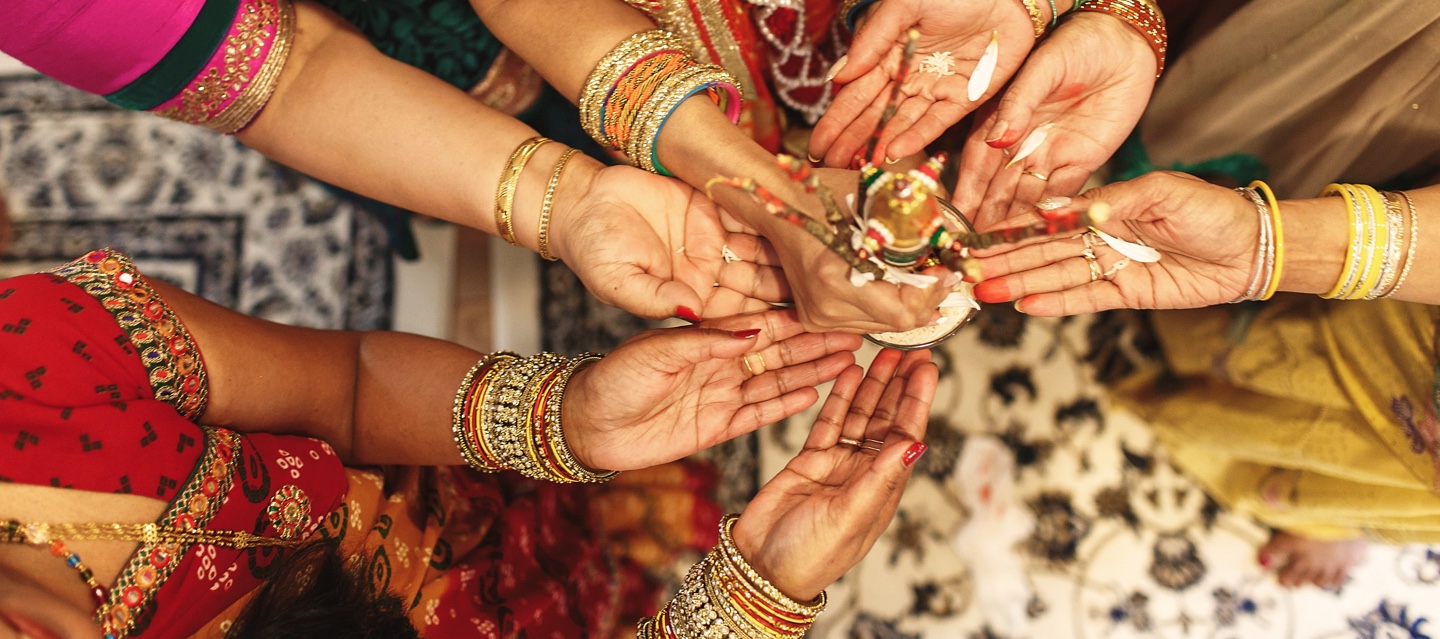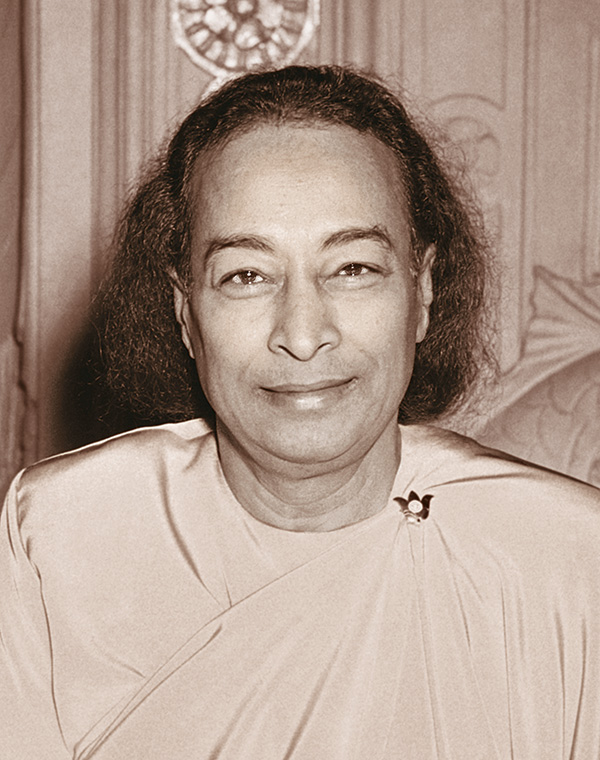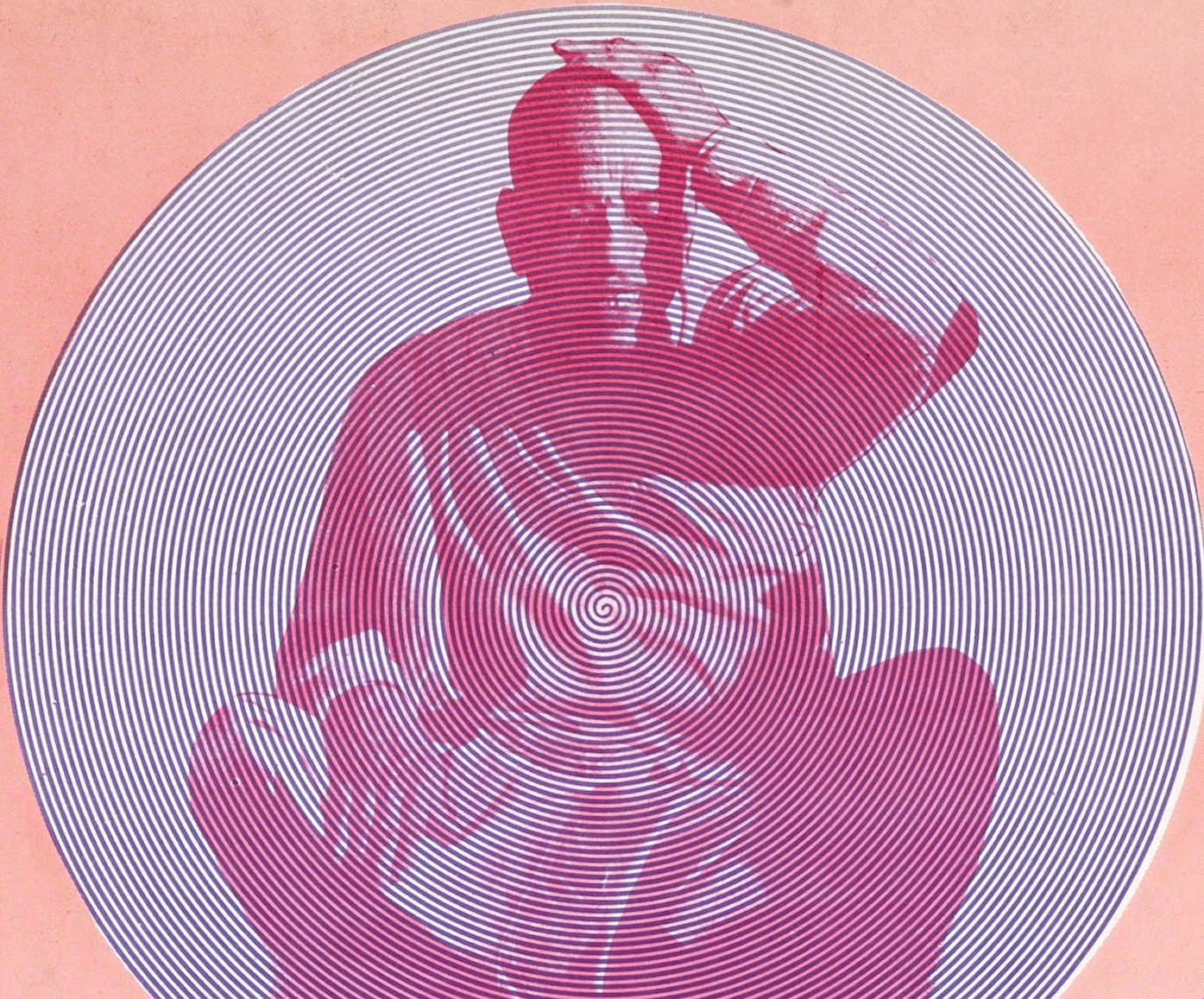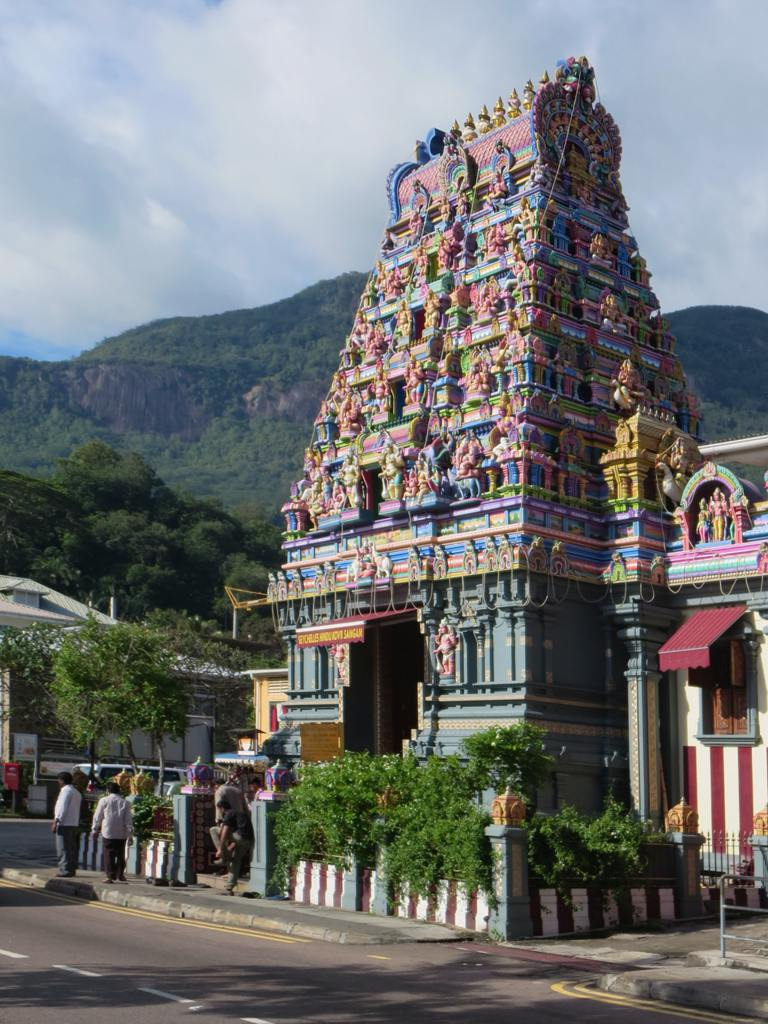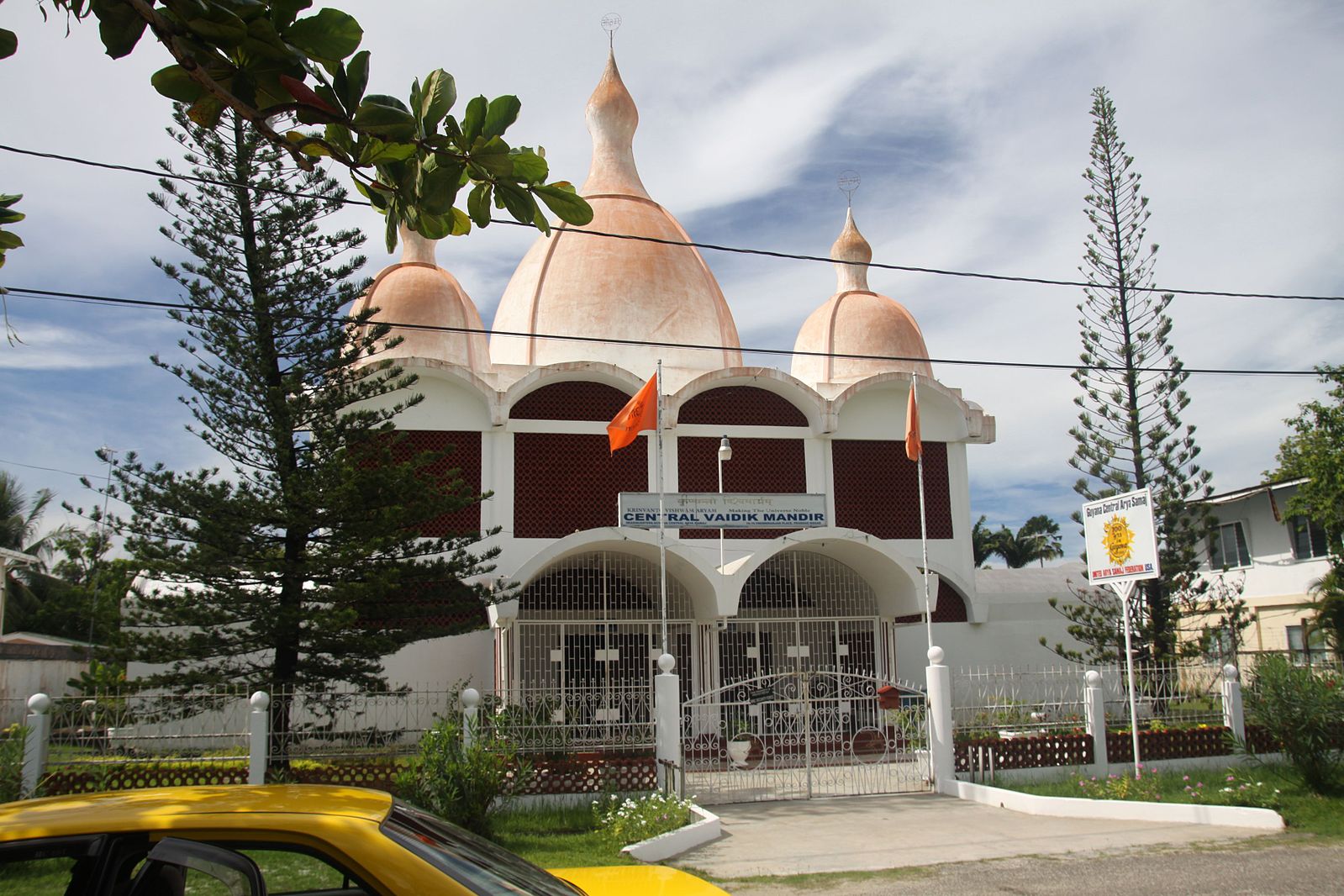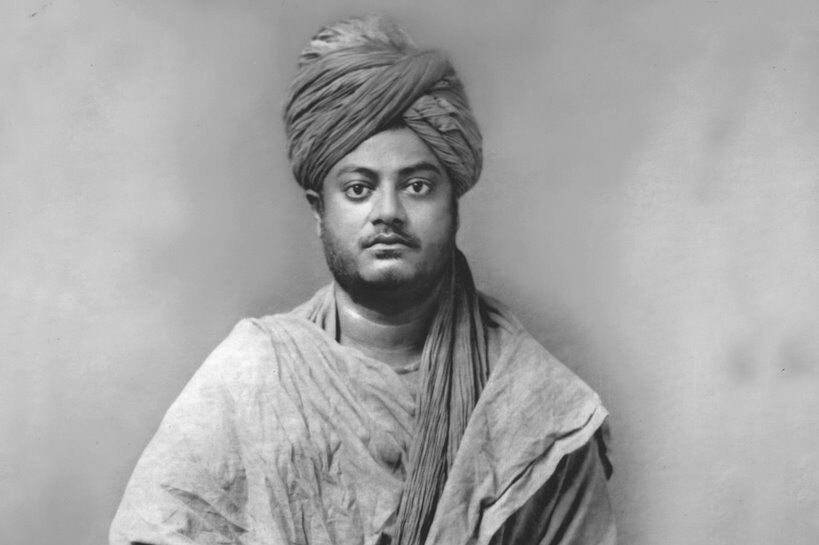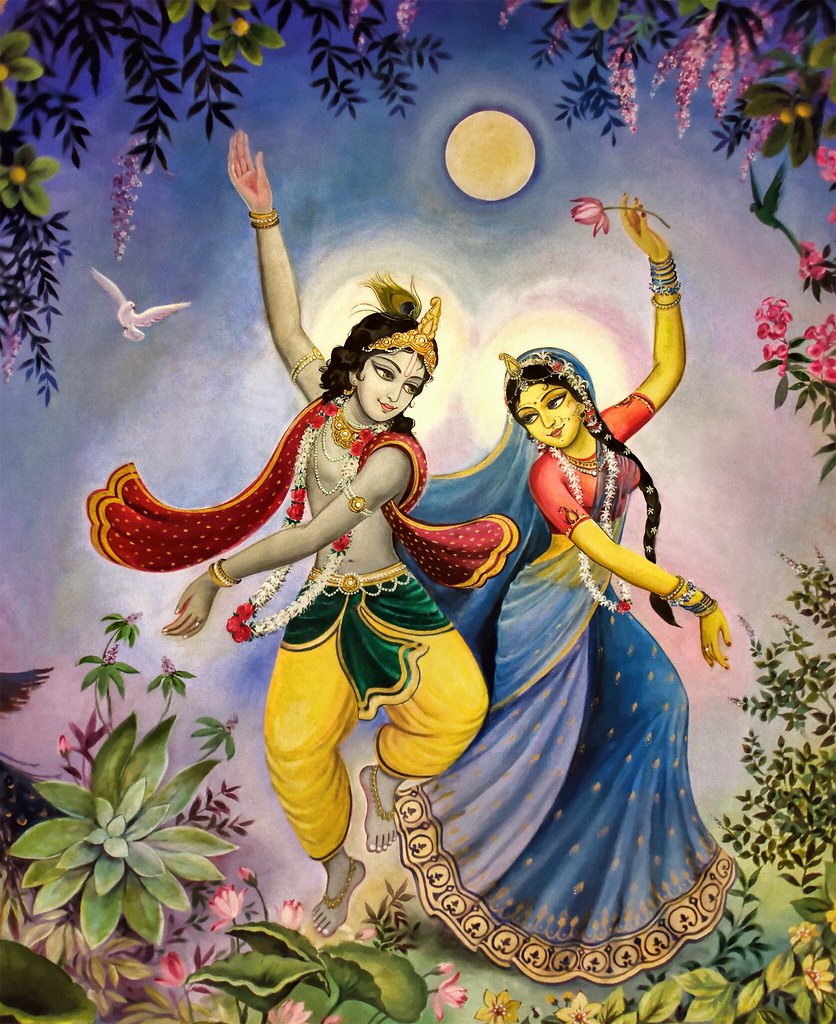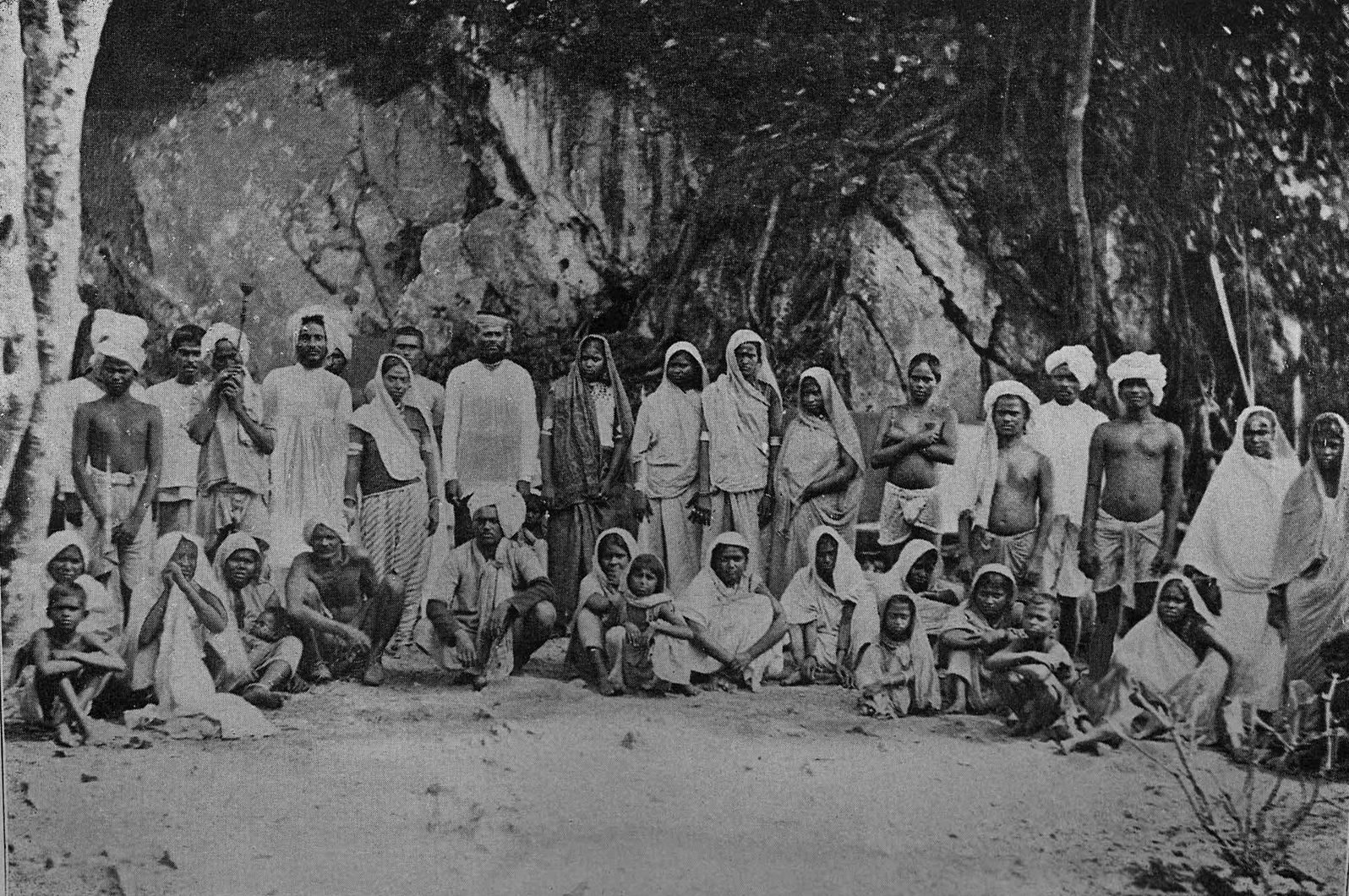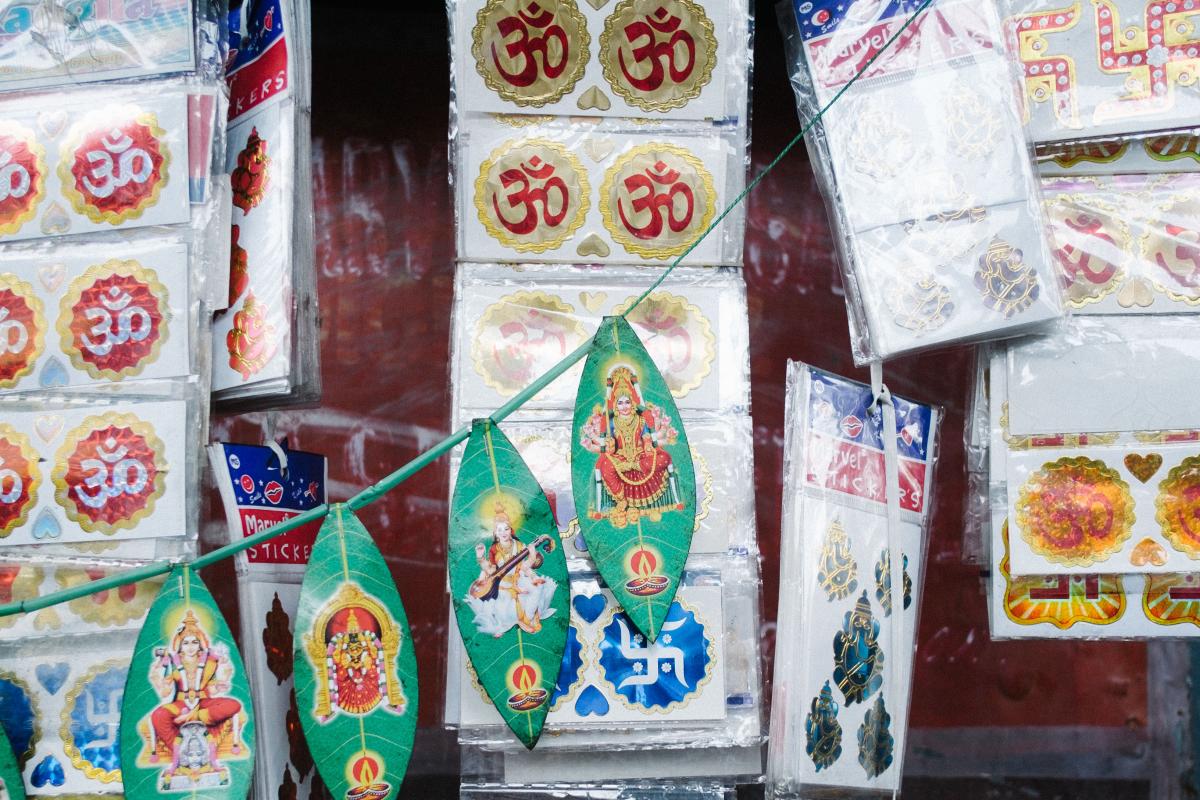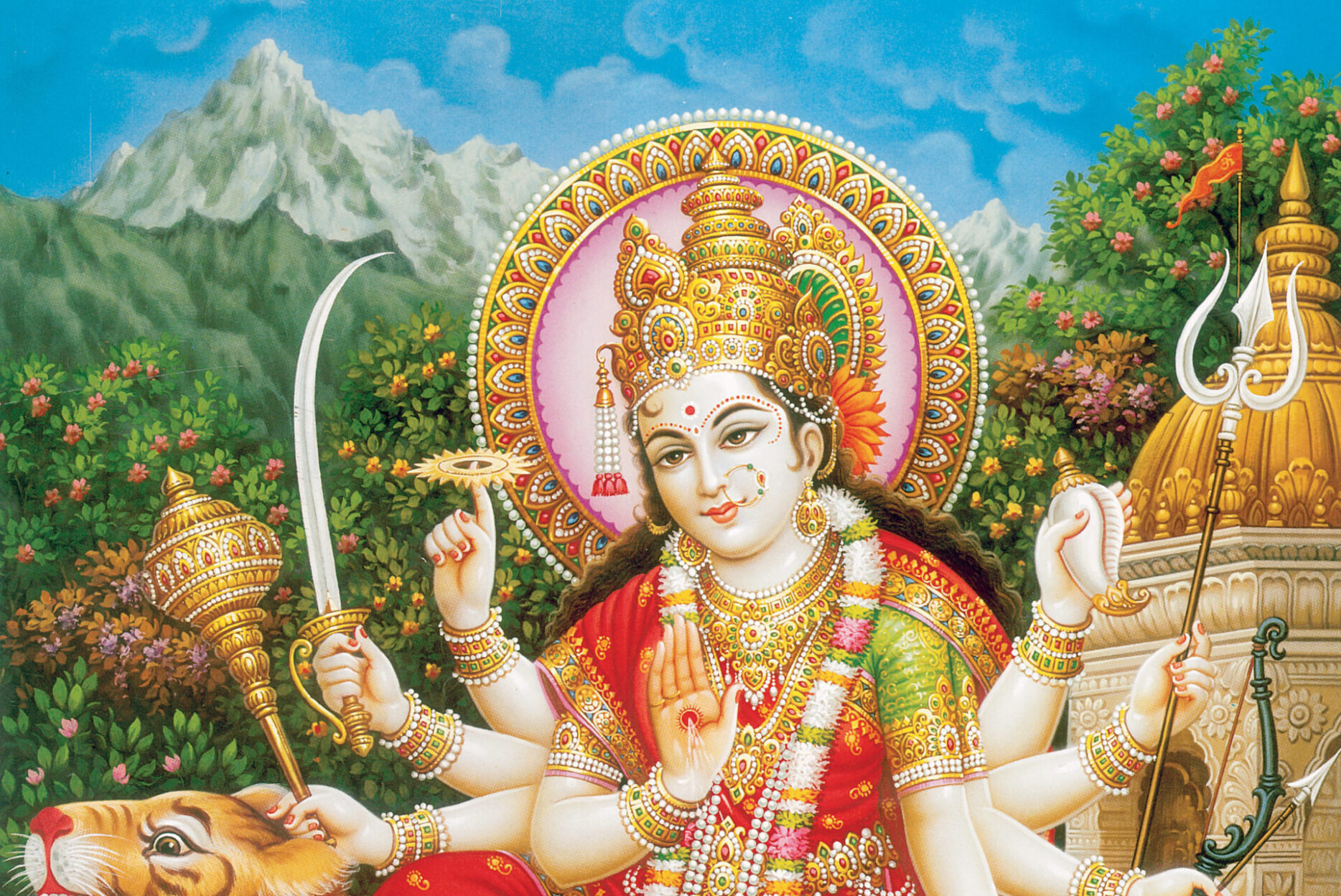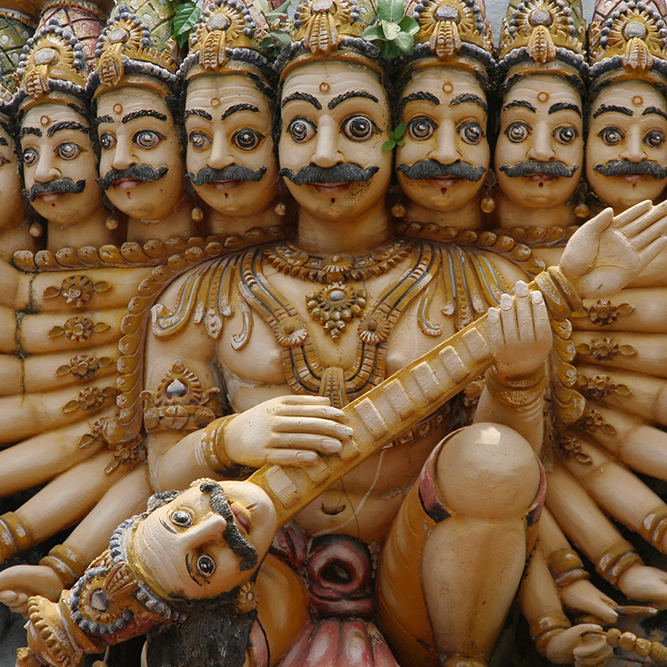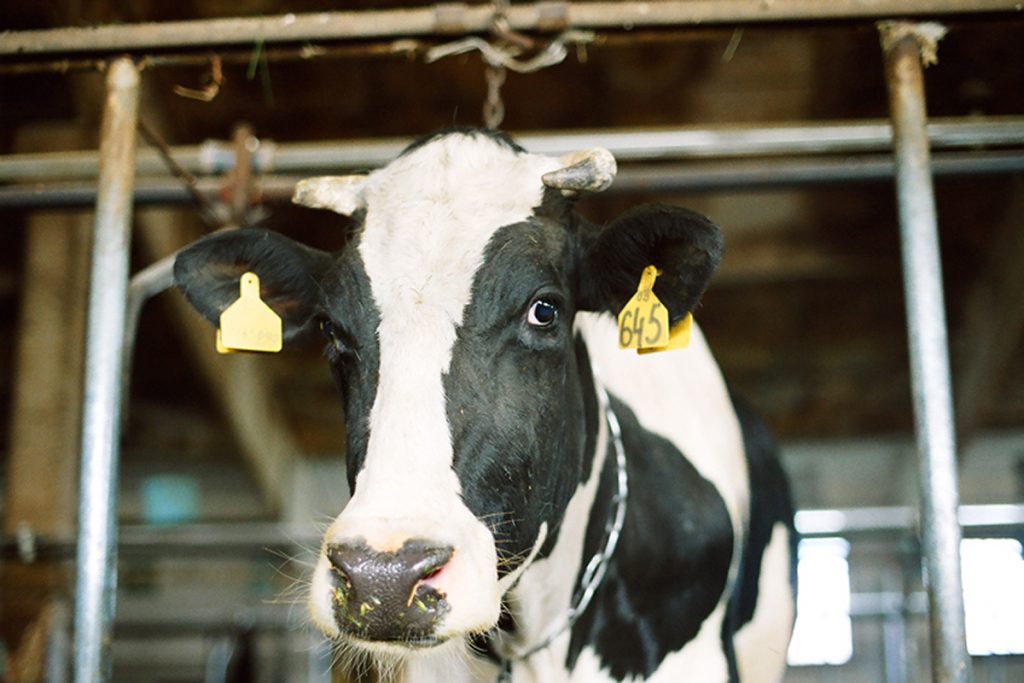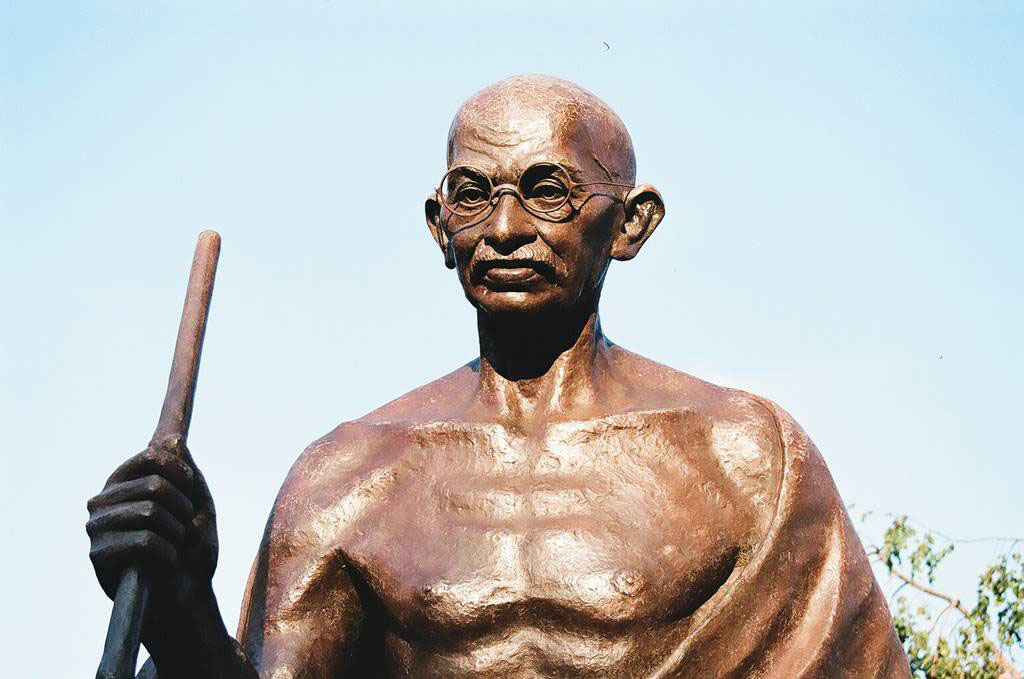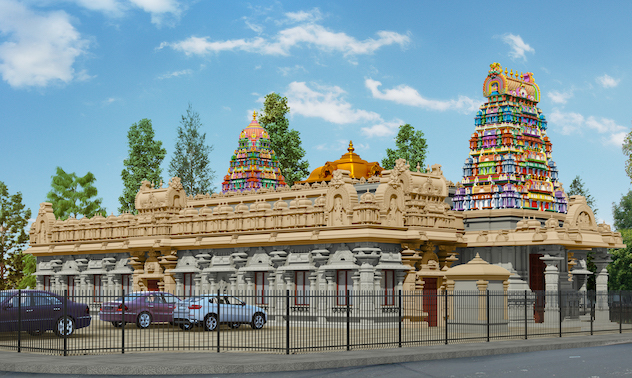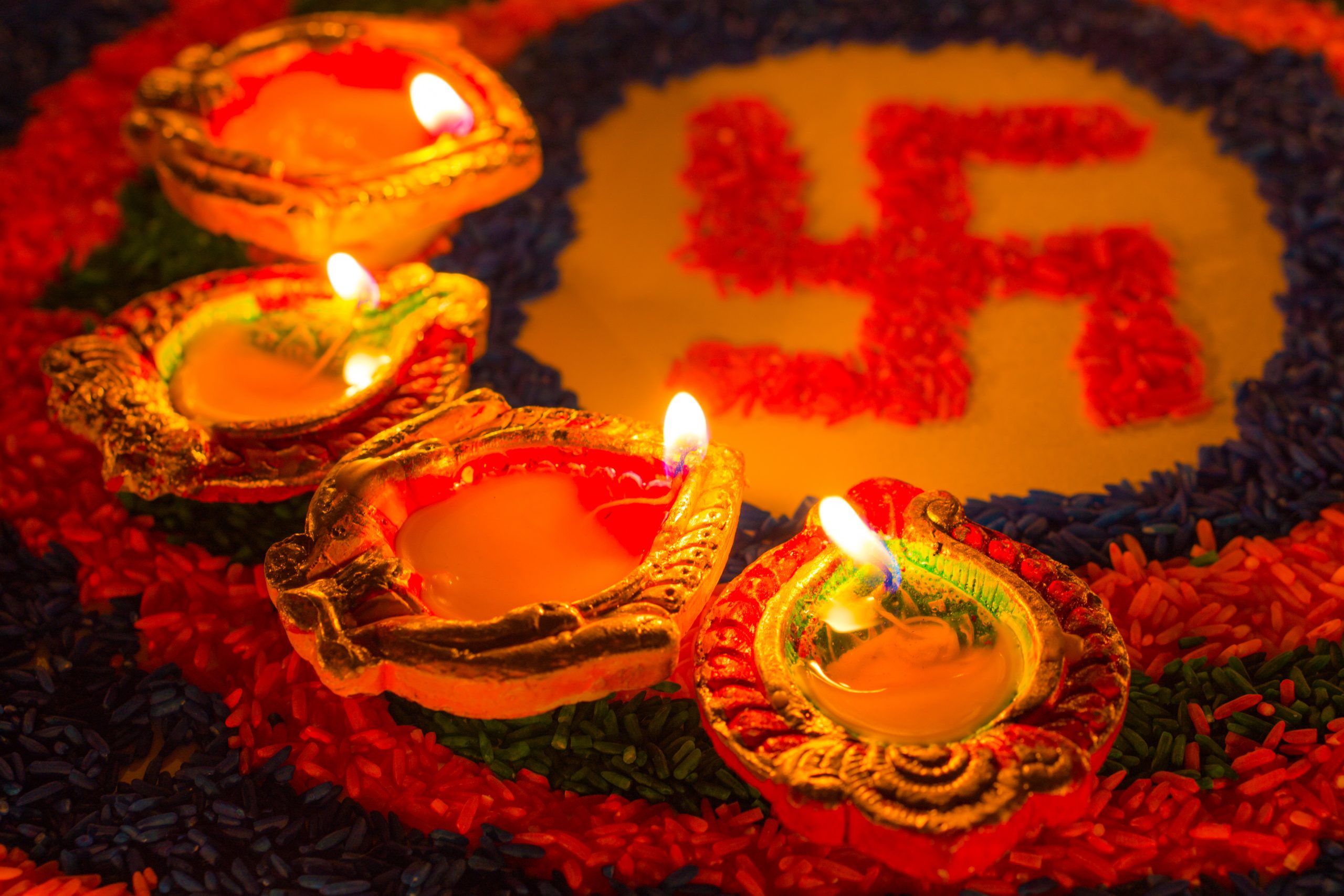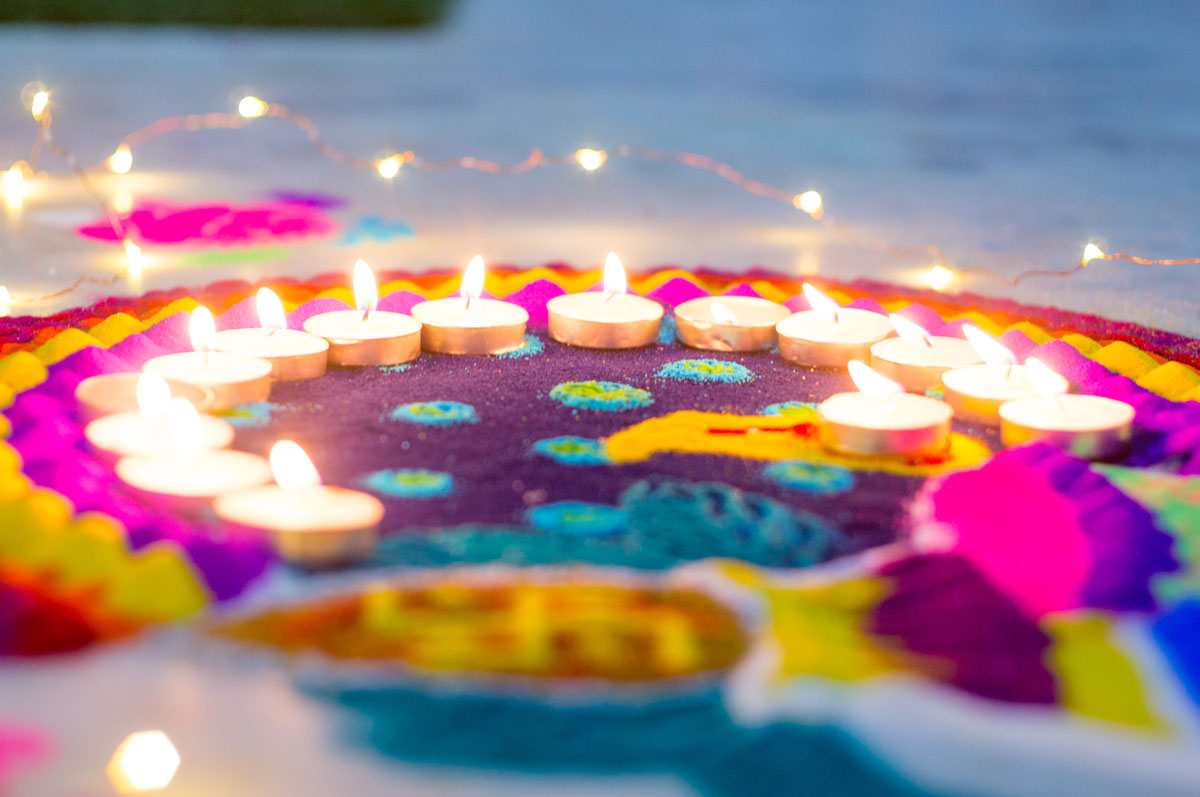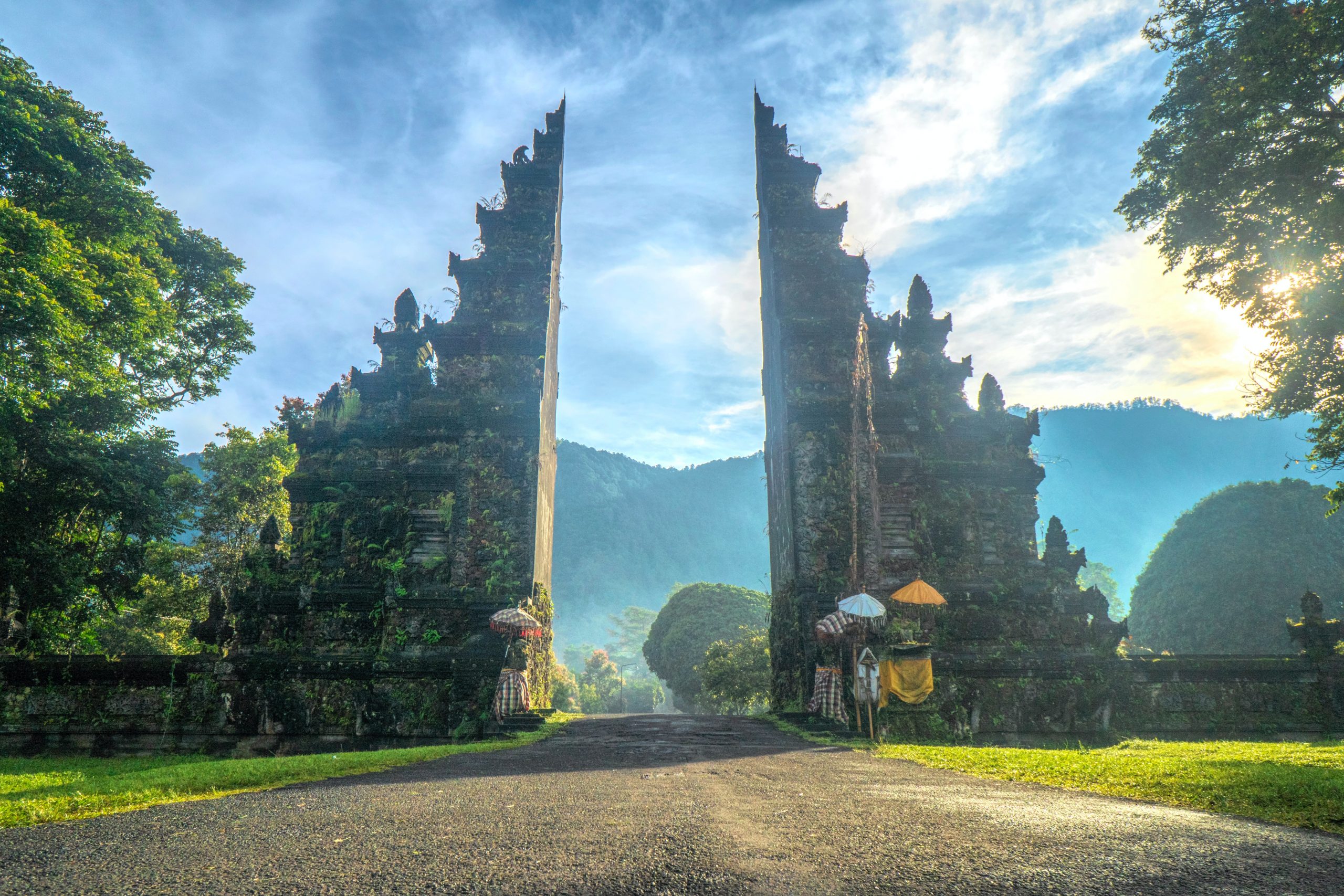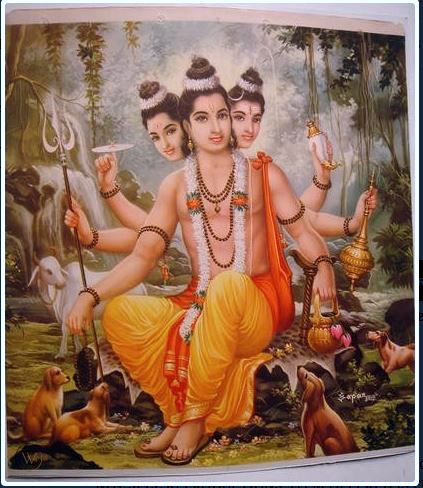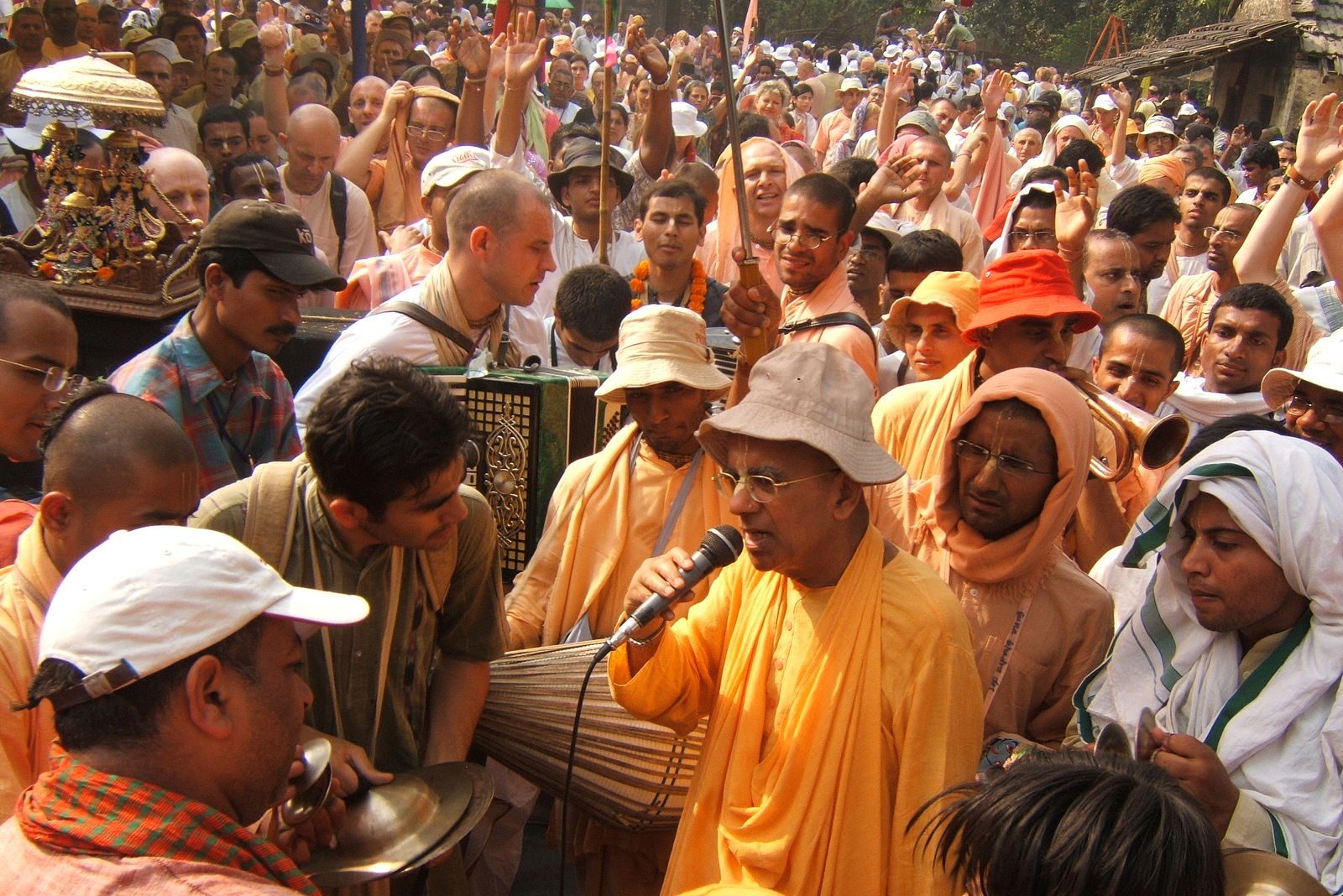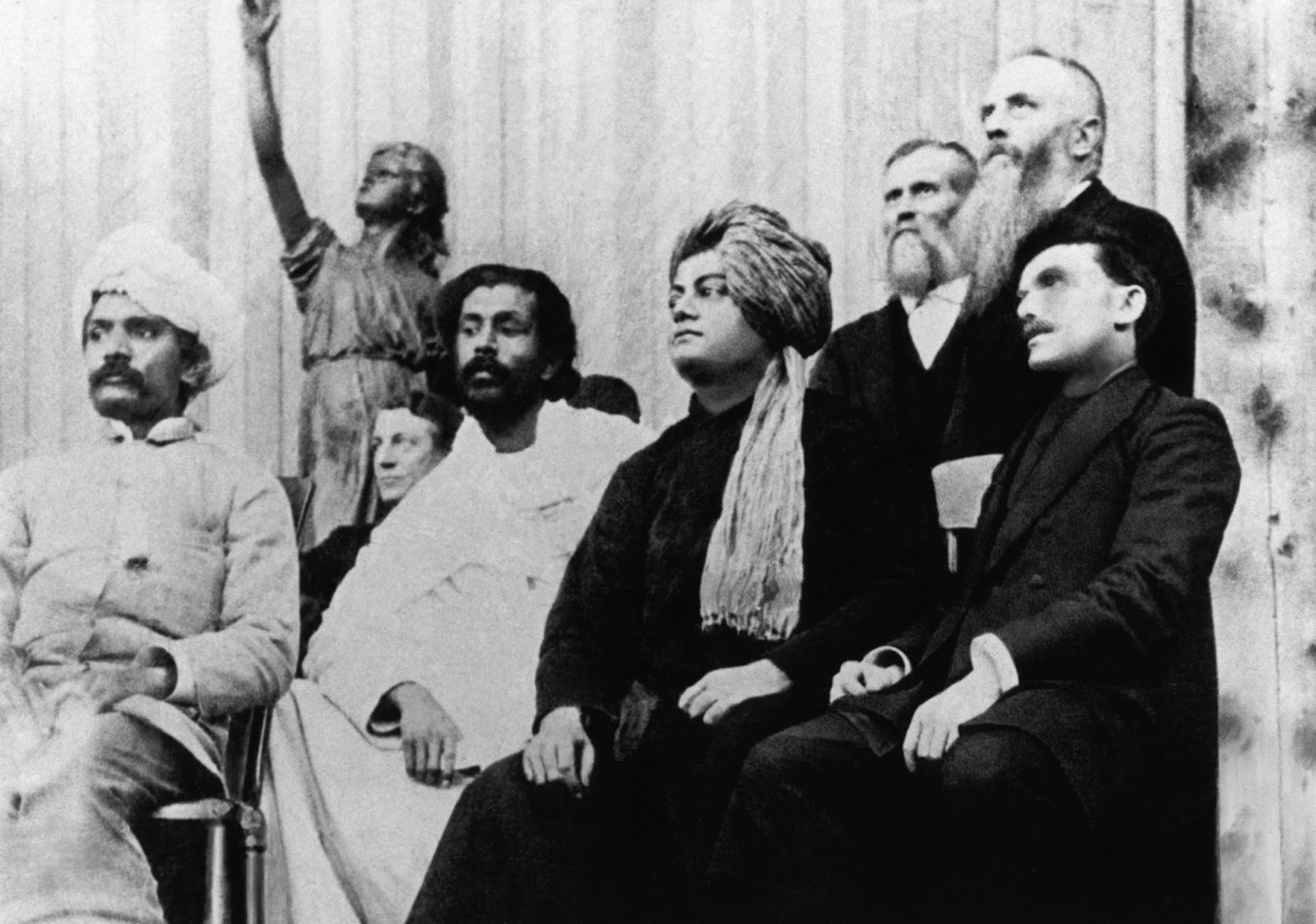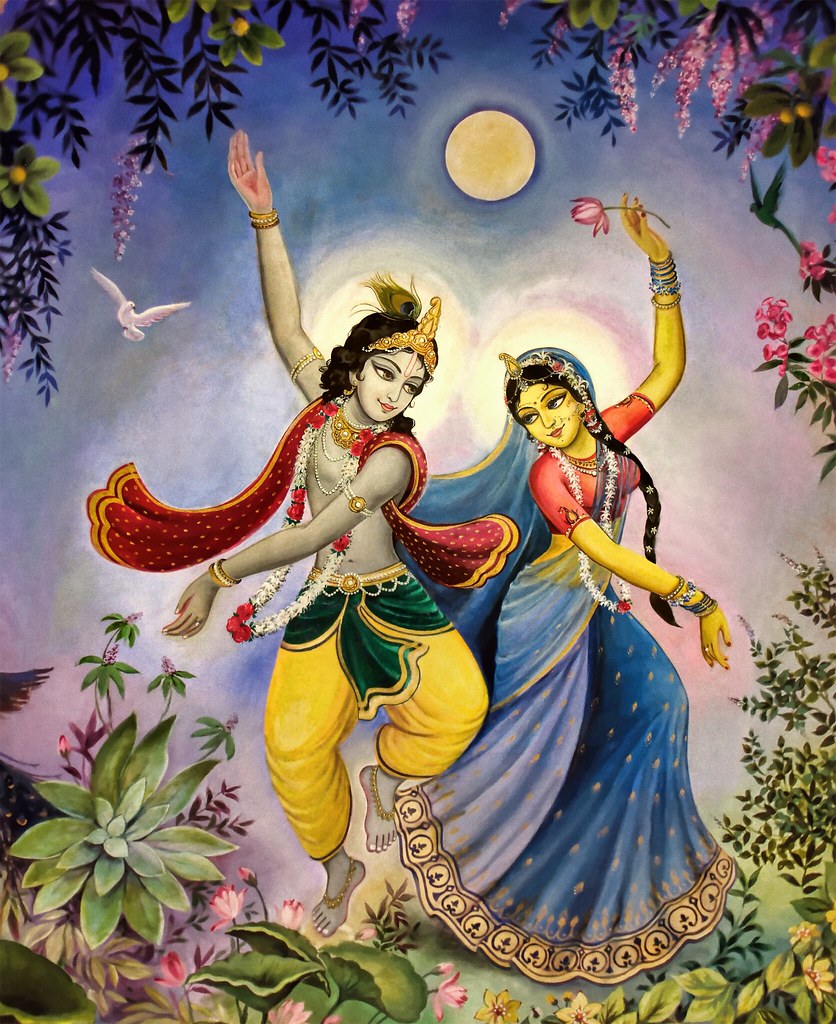The bright half of the lunar month of Kārtika kicks off with the biggest harvest festival known, following the long days and nights of harvest that started from the previous full moon of Śarat Pūrṇimā. For some regions it is also their New Year. Other regions and traditions focus more on being mindful about where commodities and necessities come from in our lives. Learning to value what we have and being realistic about what we need leads to less waste and frustration, and more satisfaction in life.
Diwali Day 5: Govardhana Puja & Annakuta
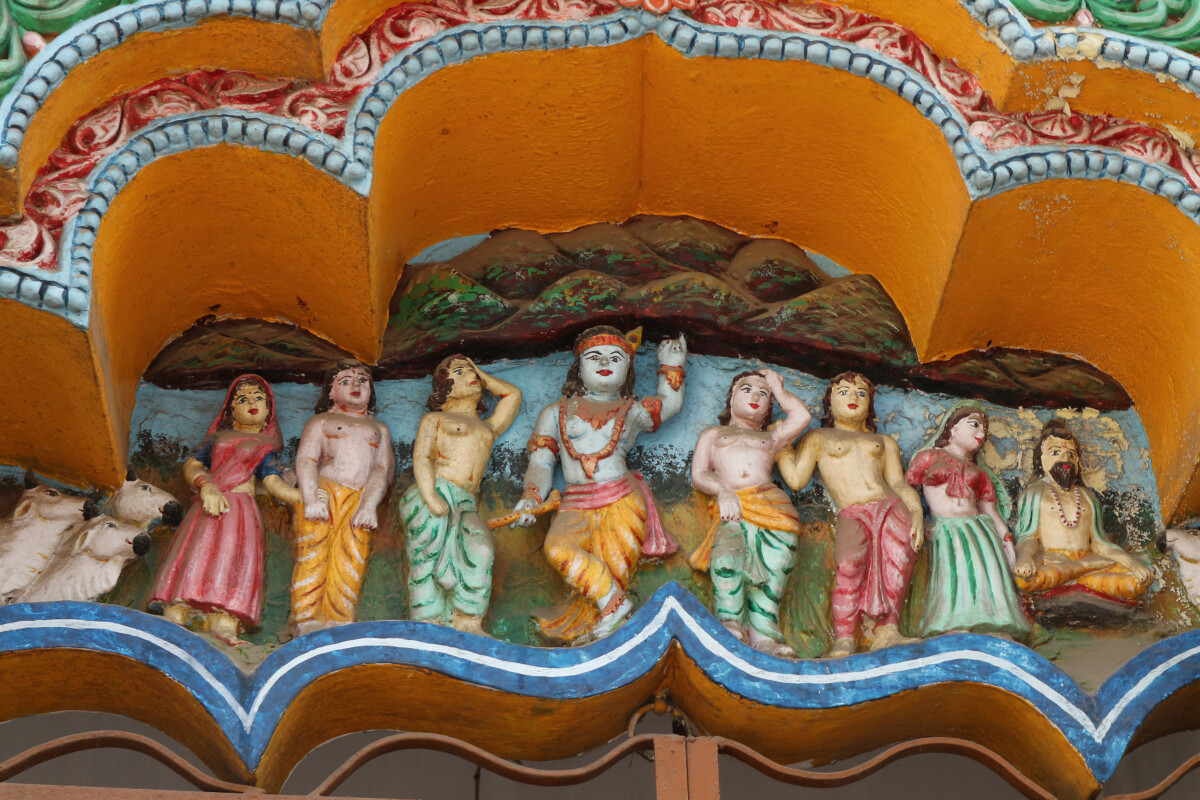
Jump to the stories of Govardhana Puja
Stories & Observances
Govardhana Puja and Annakuta
Govardhana Pūjā is celebrated the day after the main day of Dīpāvali (Diwali), and commemorates one of the most beloved episodes in the story of Kṛṣṇa (Krishna): the lifting of Mount Govardhana. The Viṣṇu, Bhāgavata and other Purāṇas carry the lessons and stories about gratitude toward nature, and the need for logic and reason to guide spiritual practices.
The central story as related in the Bhāgavata Purāṇa (10.24) begins in ancient Vṛndāvana (Vrindavan) near Mathurā. The cowherd community there traditionally celebrated the end of their harvest festivities by performing ceremonies dedicated to Indra, the Vedic guardian of the rains, in order to secure bountiful harvests. This was a comparatively new tradition, adopted when the tribal federation of the Yādavas was established a few centuries prior.
Krishna, still a young boy at this point, questioned this practice and argued that their true sustenance came not from Indra’s favor but from Mount Govardhana, the fertile soil, and the cows who provided for them. This traced back to the regional/tribal traditions of the Braj region. Krishna successfully reasoned with the villagers to redirect their Indra ceremony toward Mount Govardhana, preparing vast feasts of all types of food, thereby honoring the earth itself as the true source of prosperity1.
Indra, meanwhile, was enraged at this apparent neglect and unleashed storms to flood and devastate Vrindavan. Krishna, seeing the distress of the people, lifted Mount Govardhana effortlessly with his pinky finger and held it aloft like an umbrella. For seven days, the entire community sheltered beneath the hill until Indra, humbled and defeated, withdrew his fury and recognized Krishna’s reasoning (Viṣṇu Purāṇa 5.11)2, and he too submitted that showing gratitude to Govardhana was reasonable.
To commemorate this, devotees create mini Govardhana mountain models, decorating them with flowers, leaves, and miniature figures representing Krishna, cows, and the villagers of Vrindavan. Families and temples prepare vast spreads of food that represent the original villagers’ feast. Pilgrims travel to Govardhana itself to perform the parikrama, a meditative circumambulation of the hill that stretches about twenty-one kilometers 3 4.
People from certain regions in Gujarat and Rajasthan celebrate the day primarily as Annakūṭa (“mountain of food”). Here, the emphasis is less on symbolic hill-making and more on preparing a massive array of dishes, sometimes 56 (chappana bhoga) or 108 varieties, arranged in tiers like a mountain before the main shrines. Temples of the Swaminarayan and Puṣṭimārga Vaiṣṇava traditions, in particular, turn Annakūṭa into one of the year’s largest events, with community kitchens and decorative displays of food that echo the ancient villagers’ offerings in the Purāṇas. After the food is offered to Krishna, it is distributed as prasādam, or blessed food to devotees, underlining the communal sharing of prosperity. The story of Krishna’s protection of Vrindavan is remembered, but it is expressed mainly through abundance and generosity in food, making the festival a joyful celebration of prosperity, devotion, and community relations5.
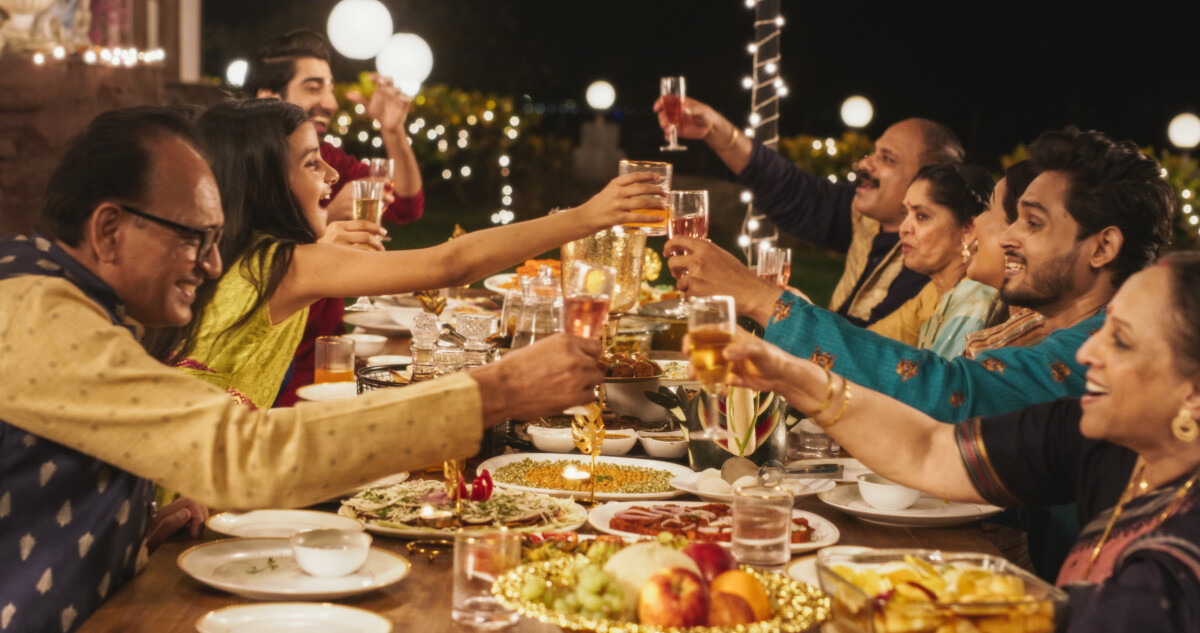
New Years… Just for the Gujarati & Newari Communities?
Every region and tribe had their own calendar which followed the specific environments of their lands. However, over time as some came together, they created shared calendars to standardize large areas with a variety of peoples. In most cases, ancient Hindus followed luni-solar calendars, meaning that there would be both a lunar and solar new year to celebrate. This would be of primary importance to regions/tribes that had an important agriculture sector, as farming is tied to natural seasons.
However, in regions where trade and commerce was the largest sector, it also made sense to use the fiscal new year as the new year. Accordingly, as many Gujarati communities and the Newar community were part of ancient trading civilizations, the fiscal new year on Kārtika Śukla Pratipadā became their major new year. In Gujarat, this is known commonly as Bestu Varash or Nūtana Varṣa, and in Newar federations it is known as Nhu Dan. Some groups of Marwari heritage from Rajasthan also celebrate it, as they too were involved in trade.
For all these communities, the thread of celebration is common – gift giving, food sharing, and showing gratitude for family and friends, and the community at large with the hope for a better year ahead.
Bali Pratipadā
Some communities with heritages in Maharashtra, Karnataka and a few other regions observe Bali Pratipadā on this day, which celebrates the return of the righteous King Bali to earth. The Govardhana story is remembered, but the day’s ceremonies are also shaped by this regional tradition – which is similar to the celebration of Onam for the same reason by peoples in Kerala earlier in the year. People build small images of Bali and his wife Vindhyāvalī and offer gratitude through food and colorful floral designs.
Goru Tihār & Mha Pūjā
In Nepal, Govardhana Pūjā falls during the Tihār festival cycle, but it is closely tied to Mha Pūjā, the Newar ceremony of venerating one’s self. The Govardhana story is remembered, and oxen (known as goru in Nepali, essential for ploughing the terraced farms of the Himalayan foothills) are honored with garlands and food, recognizing their role in agriculture and sustenance. Alongside this, each person creates a maṇḍala, a sacred diagram, and venerates their own inner divinity, treating their bodies as a temple of the divine. In this way, the themes of Govardhana Pūjā – gratitude to nature, respect for animals, and humility – are expanded to include self-realization and harmony.
1 https://vedabase.io/en/library/sb/
2 https://pujayagna.com/blogs/hindu-festivals/govardhan-puja?srsltid=AfmBOoqkAH1KiZIWtmCh0D_4B5FINwJqBvhNbXwmvpeyfBc3F2JkVpZ-
3 https://bookmypoojaonline.com/blogs/govardhan-puja-2025
4 https://www.hindustantimes.com/cities/others/govardhan-puja-braj-region-s-devotional-commemoration-after-diwali-101699973569793.html
5 https://hindupad.com/annakut-puja-on-nutan-varsh-in-gujarat/




